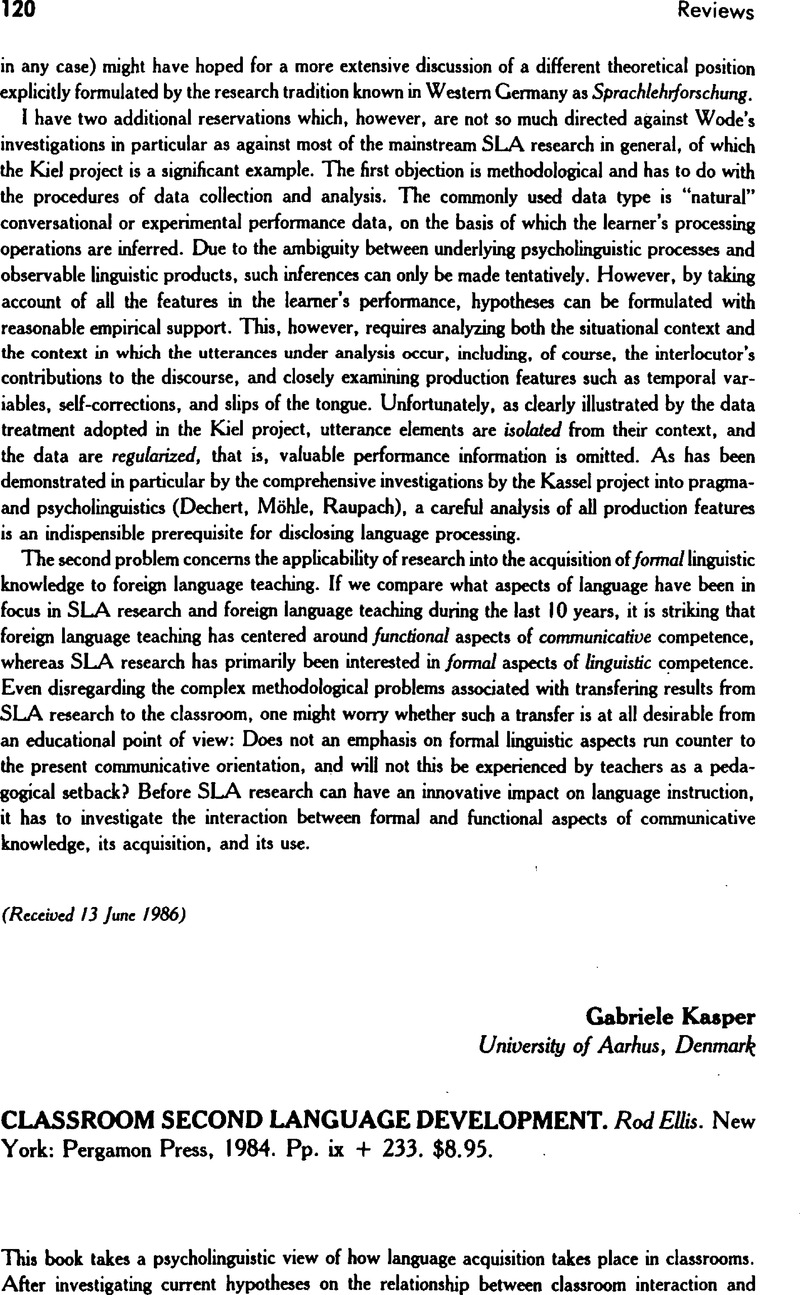No CrossRef data available.
Article contents
CLASSROOM SECOND LANGUAGE DEVELOPMENT. Rod Ellis. New York: Pergamon Press, 1984. Pp. ix + 233. $8.95.
Published online by Cambridge University Press: 07 November 2008
Abstract
An abstract is not available for this content so a preview has been provided. Please use the Get access link above for information on how to access this content.

- Type
- Reviews
- Information
- Copyright
- Copyright © Cambridge University Press 1987
References
REFERENCES
Allwright, R. L. (1984). Why don't learners learn what teachers teach? The interaction hypothesis. In Singleton, D. M. & Little, D. G. (Eds.), Language learning in formal and informal contexts (pp. 3–18). Dublin: Association of Applied Linguistics.Google Scholar
Kintsch, W. (1974). The representation of meaning in memory. Hillsdale, NJ: Lawrence Erlbaum.Google Scholar
Kramsch, C. (1984). Interaction et discours dans la classe de langue. Paris: Hatier-Crédif.Google Scholar
Krashen, S. (1982). Principles and practice in second language acquisition. Oxford: Pergamon Press.Google Scholar
Schank, R. C., & Abelson, R. P. (1977). Scripts, plans, goals and understanding. Hillsdale, NJ: Lawrence Erlbaum.Google Scholar
Sharwood-Smith, M. (1981). Consciousness-raising and the second language learner. Applied Linguistics, 11(2), 159–169.Google Scholar




